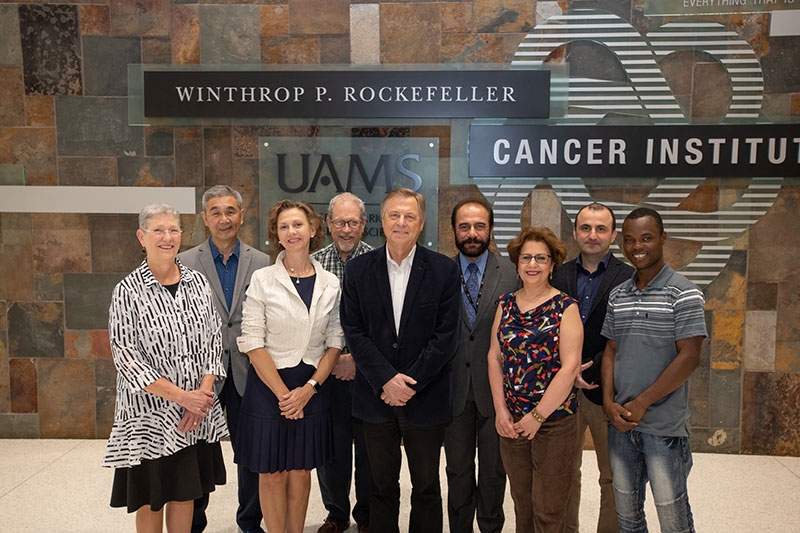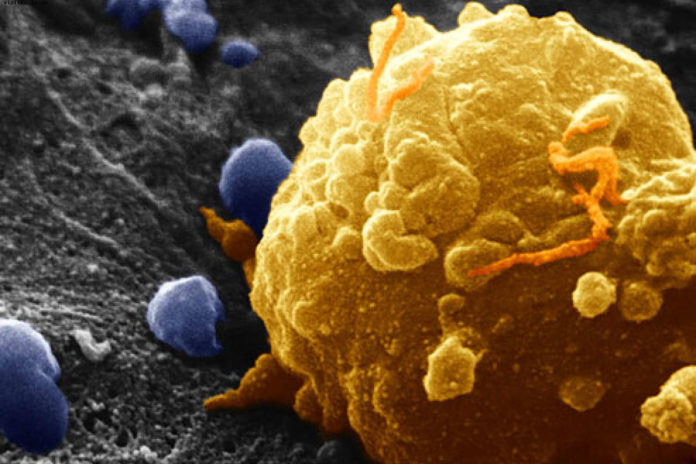A team of scientists at the University of Arkansas for Medical Sciences (UAMS) has successfully tested a non-invasive device called “Cytophone” that can detect and kill circulating tumor cells (CTCs) in the blood. Cytophone integrates a laser, ultrasound and phone technologies.
Researchers revealed that their system accurately detected these cells in 27 out of 28 people with cancer. It is 1000 times more sensitive than other methods at detecting CTCs in the blood of patients with melanoma, a deadly form of skin cancer. The Cytophones can detect CTCs even when the tumor is not identifiable on the skin, either because too small – known as the T0 or TX stage or after surgical removal, and then to destroy them without harming surrounding blood cells.
Their device was also able to kill a high percentage of the cancer-spreading cells, in real time, as they raced through the veins of the participants.
The metastasis or the spreading of the cancer cells through the body is the primary cause of cancer-related death. Killing these circulating tumor cells, or CTCs, in the bloodstream before they have a chance to settle could help prevent metastasis and save lives.
“The only methods that are available to detect CTCs are mainly based on drawing blood from the patient. An average blood sample taken from a patient consists of only a few milliliters, which may or may not contain any CTCs. In contrast, the Cytophone can monitor a person’s entire five-liter blood supply, potentially locating every CTC in it. No needle is used, and no blood is removed,” said Zharov, a professor in the UAMS College of Medicine Department of Otolaryngology-Head and Neck Surgery.
Based on a principle called in vivo photoacoustic flow cytometry, the portable Cytophone uses laser pulses to penetrate through intact skin and into blood vessels to monitor circulating abnormal cells. Beamed at a vein, the laser sends energy to the bloodstream, creating heat. Melanoma CTCs absorb more of this energy than normal cells, causing them to heat up quickly and expand.
This fast thermal expansion generates a sound that is detected using an ultrasound transducer attached to the skin. When tested, the system accurately identifies the CTCs in 96% of the patients in between 10 seconds and 60 minutes. The same laser can also be used to destroy the CTCs in real time.

Researchers found that the device not only discovered CTCs in advanced stage patients but also revealed the presence of CTCs in patients with early Stage 2 disease.
Also read: New AI Model can Predict Future Risk of Breast Cancer
The Zharov team also demonstrated the Cytophone performance for the identification of cancer-related blood clots, which is the second leading cause of death among cancer patients.
“We are developing the robust, easy-to-use portable and wearable Cytophone versions with advanced small lasers, which will be available for cancer clinics across the country to start a multi-center clinical trial involving more melanoma patients. Our goal is to determine whether Cytophone-based early diagnosis combined with destroying CTCs is effective as a stand-alone treatment or in combination with conventional therapies in preventing or at least inhibiting metastasis,” said Zharov, adding that the FDA has provided the conclusion of the Cytophone’s safety in humans.
Cytophone’s other applications in label-free mode could include detection of sickle cells to prevent sickle cell crisis, detection of clots to prevent stroke, and selection of the most effective drug through monitoring of circulating disease-associated markers count decrease.
The study is published in the journal Science Translational Medicine.
